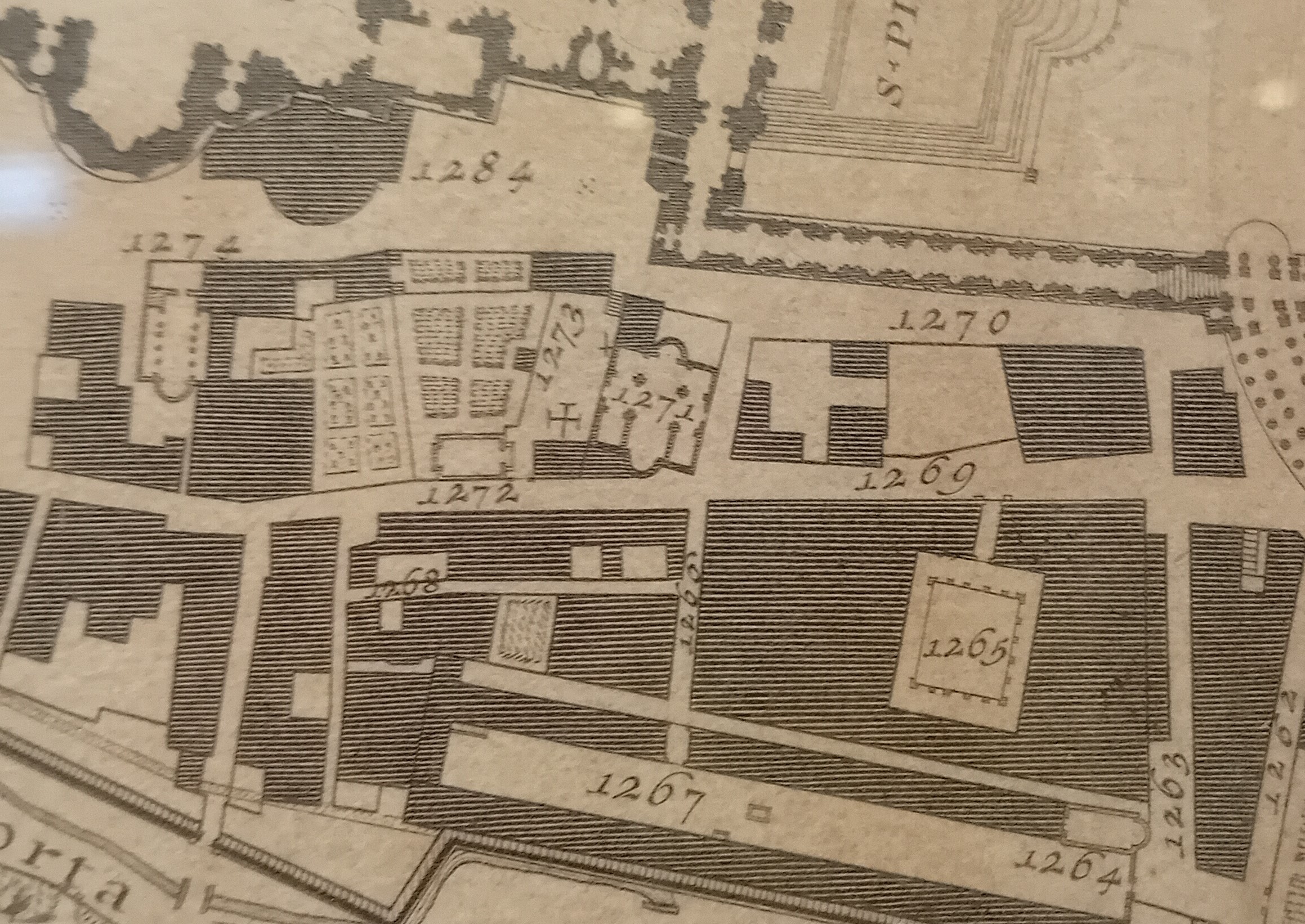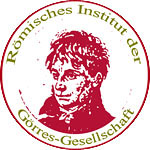The Campo Santo Teutonico on the map of Giambattista Nolli
The city map of Rome by Giovan Battista Nolli from 1748 - it hangs on the first floor of the German Archaeological Institute - shows the Campo Santo Teutonico differently than it is today. At no. 1272 you can see the former oratory, which was located where Pope Benedict XVI's auditorium is today and where the Görres Lectures take place.
No. 1271 is the church of Campo Santo, adjoined to the north by a small building in which the chapter house of the brothers of the brotherhood and the men's hospice were located. Adjacent to the left is the now demolished women's hospice (no. 1273). You can also see a cross, which is probably inside the building below, i.e. in the Chapel of the Cross (now the Chapel of the Dead). Even today, an offering box at the mortuary chapel reminds us that the miraculous cross once stood there, which now hangs in the sacristy.
To the left of the German cemetery with its characteristic four fields is a garden. It belonged to the Germanicum. Church no. 1274 is S. Stefano Minore, the national church of the Hungarians, which probably belonged to the Germanicum along with the neighbouring building and garden.
The major structural change came a few years later when the new sacristy of St Peter's was built under Pope Pius VI Braschi (1775-1799). The buildings of the Campo Santo were largely sacrificed for this. However, the rococo building ("Hospice", now the Secretariat, etc.) and the rococo wall, which will soon be renovated, were built as compensation for the lost properties.

Lit.: F. Lombardi, Roma. Le chiese scomparse (Roma 1996) 351, 377-378.
- Details
- Written by: Stefan Heid
- Category: Roman notes
 Römisches Institut der Görres-Gesellschaft
Römisches Institut der Görres-Gesellschaft






